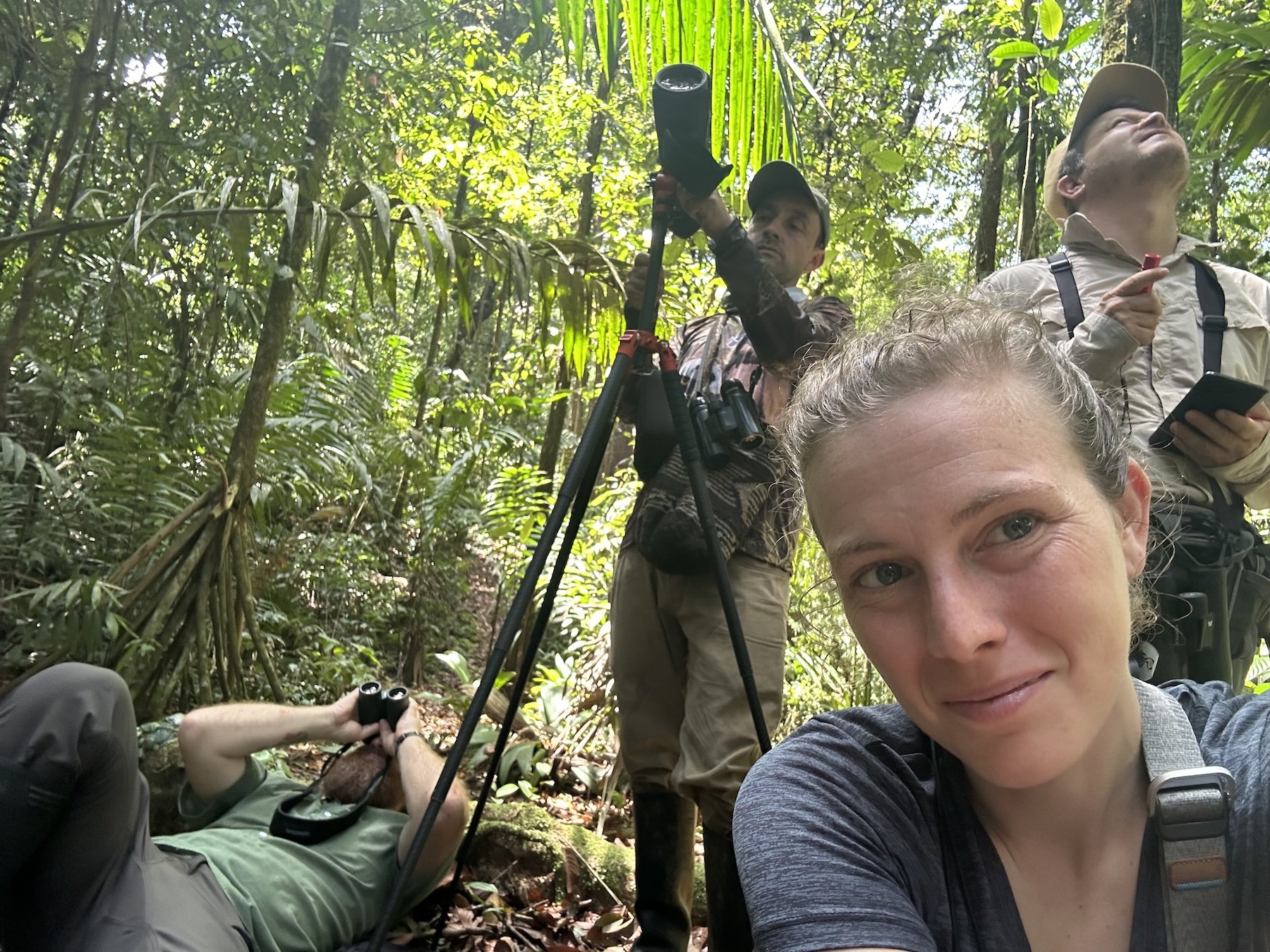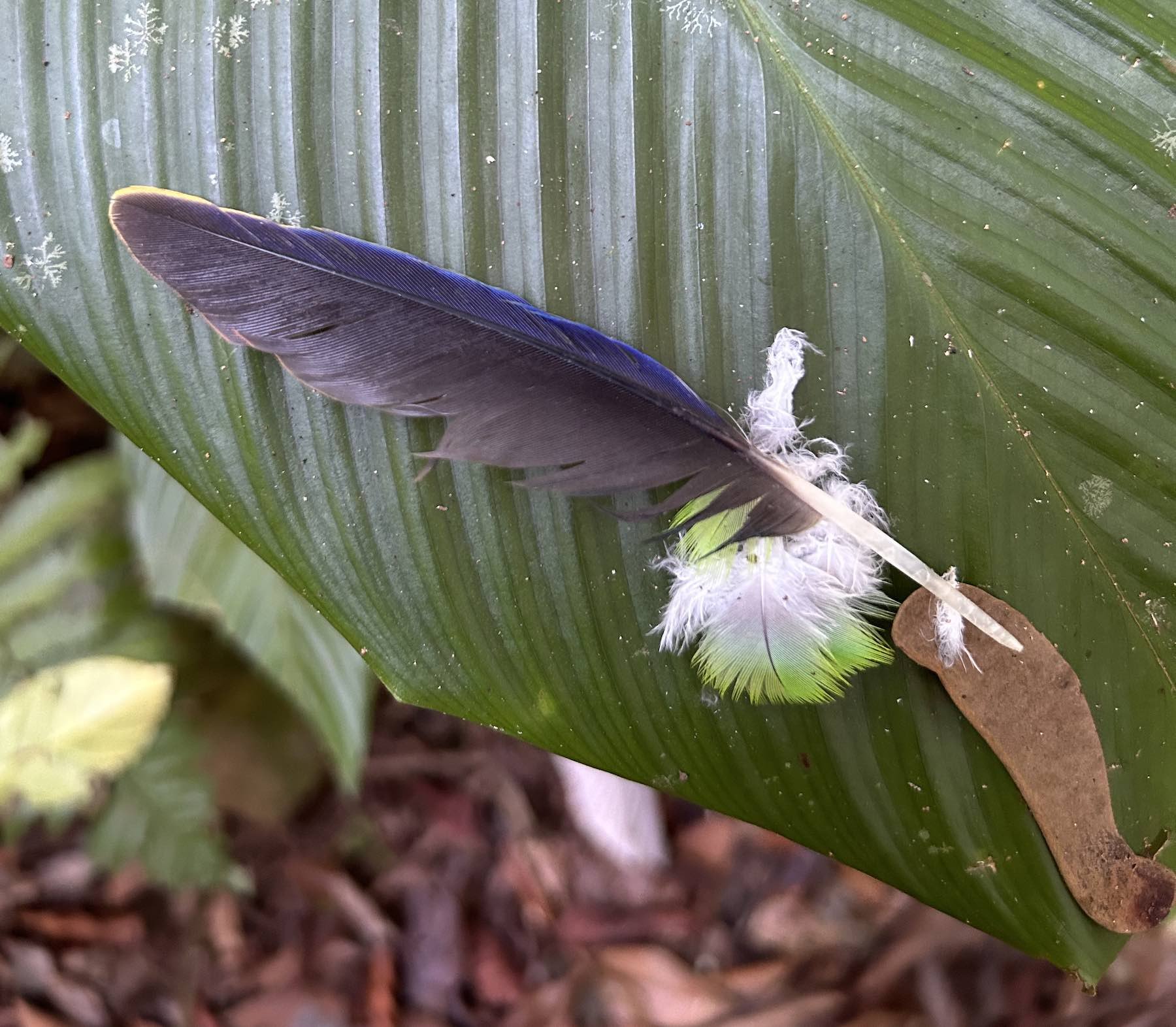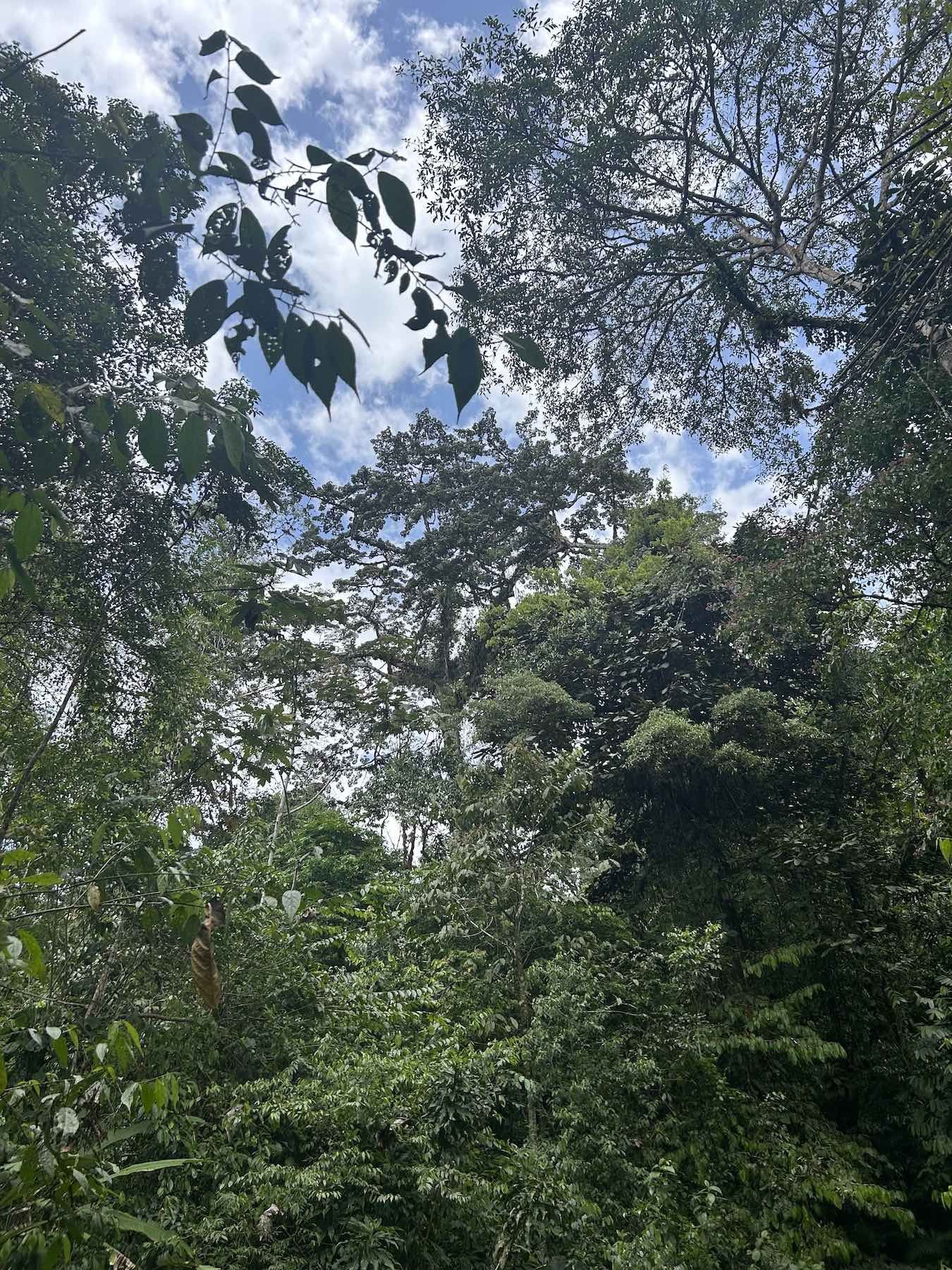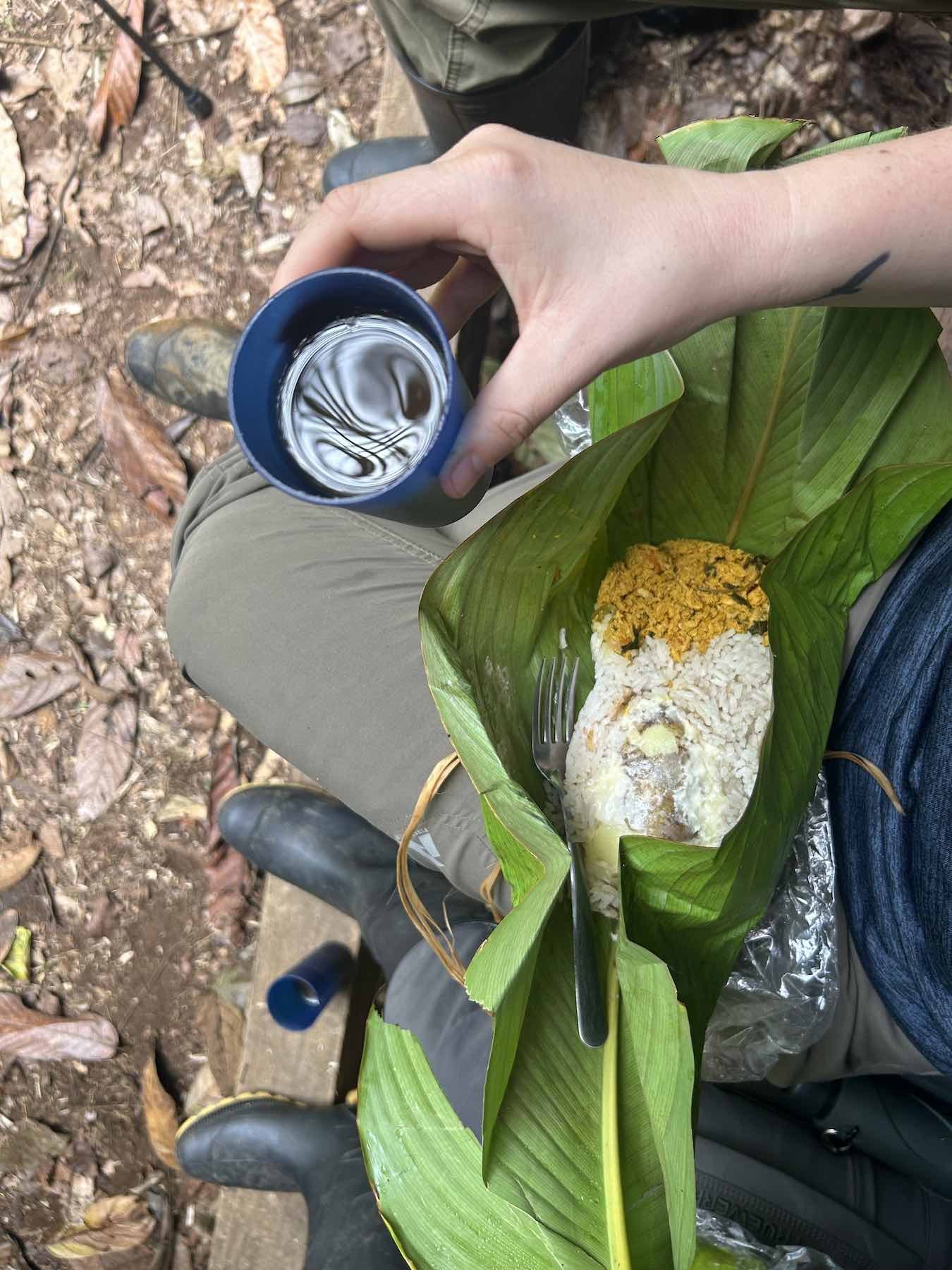The Quest for Harpy Eagle
A day even more unforgettable than this iconic bird.
By Mollee Brown
My partner Jimmy and I joined our friend Giovani Ortiz to visit Bahia Solano on the Pacific coast of Colombia in February. Our target bird was a special one: the Chocó Tree-Antpitta.
Bahia Solano was established as an agricultural colony in 1935. As a result, families from all over Colombia were brought to the Chocó by the government to establish farms. Through the decades since, commercial trades have built in this rural area, bringing a mix of cultures, too.
This part of the coast is only accessible by boat (coming north from Buenaventura, Colombia’s only Pacific port) or plane from Medellin. We contemplated the oceanic route, which had a relatively expensive 8-hour “speed boat” option or cheap overnights in a cargo ship’s dorm-style rooms, but ultimately chose to fly on a small domestic airline and take advantage of passing through Giovani’s hometown to do laundry and drop off some of our things. After packing for weather at 13,000 feet - where we find Buffy Helmetcrest and other specialties on our Hillstar High Times tour - my warmest clothes wouldn’t be needed in the hot, humid lowlands!
Bahia Solano through the plane window.
We had the fortune of running into friends in San Cipriano, our previous destination, but our time with them led us to a series of missed transportation connections and threatened our chances of making it onto our plane. There are only a few flights each week to Bahia Solano, so missing our flight would mean we’d miss our entire trip. When Jimmy and I emphasized that it would be okay if our plans didn’t work out, we saw just how badly Giovani wanted to make it out to the coast. He had been secretive about what he had planned for us, leaving all of the travel planning to him, and it was becoming more and more clear why.
In my research before arriving in Colombia, I found that this special bird (the Chocó Tree-Antpitta, of course) had a known nest near Utría National Natural Park. I didn’t know the status of the nest or the access options, but knew that if it was possible to see this species, Giovani would make it happen.
We made our flight and watched the city and then agricultural fields melt away into vast stretches of undisturbed forest. We arrived to meet Julian, a Bahia Solano native and fast friend, who took us in his tuk tuk to our small open-air hotel overlooking the bay. The town is quiet, close-knit - with Julian greeting by name nearly everyone we passed - and sleepier than the still-small-but-more-touristy beach town of El Valle, where most of the rest of the passengers on our plane were headed. We had a fantastic tuna dinner cooked by our host. His name was also Jimmy, and we learned about the Spanish word “tocayo,” meaning someone who has the same name as you and used warmly. There’s no English equivalent for it!
Jimmy’s place. Our room was only slightly more enclosed than this to take advantage of the breeze.
We were told for the next day to bring lots of water and necessities for a day-long hike that started with a boat ride to our access point. It would also require wearing rubber boots. That night, I told Jimmy about my suspicions about our hike’s goal. However, I had resisted temptations to check eBird maps (turns out there wasn’t much data to check, anyway), and left it as a surprise for both of us.
Tractors and tuk tuks ruled the streets. Everyone thought this sunrise was worth the pause.
We took a short walk to our boat the next morning and tallied a handful of shorebirds in the first light of the day. A few miles away was Playa Mecana and the Jardín Botánico del Pacífico. “Botanic Garden” painted a picture of manicured lawns and ornate nonnative flowers in my mind, but this 170-hectare privately-owned reserve is instead a protected stretch of primary forest.
We decided that if you want a Jurassic-park-like feel to your travels, this place is hard to beat. Especially because there were no other humans in sight for nearly our entire time in the parks.
Our day started with a little more coffee and a chorus of songs and bird activity. Many super-localized Humboldt’s Sapphires zipped around and we spent time looking for a calling Sooty-capped Puffbird. This is one of the only accessible areas to get Chocó-endemic species, and our excitement built with each new bird and increased our awareness that we were somewhere special. Even with experience birding throughout central Colombia, and dipping into the Chocó in San Cipriano and in Panama, there were still many new birds to be seen.
One of just two videos of Humboldt’s Sapphire on eBird! There are also a few photos in my checklist linked at the bottom of this post.
Life birds aside, the birding was flat-out fun. We walked tall, narrow boardwalks high above mangrove marshes that wound parallel to the shore. We spent time watching a Whimbrel jolt back and forth in the mud below the canopy while Magnificent Frigatebirds drifted overhead.
Eventually, we worked our way into the forest and proper trail. We passed a few houses along the way, and again, Julian chatted with every person we met. At the last house, Antonio stepped outside and joined us. He was the caretaker of the woods with a spiritual connection with what lies within that was both apparent and revealed throughout the day in his stories. More than once, he pointed out things from the back of the group that we missed, including a coral snake mimic all four of us stepped over. He discovered the special nest we were visiting.
The crew, minus Antonio, and some parrot feathers along the trail.
We wound higher into the forest, climbing some short, steep hills, and activity slowed to spurts. Despite the lowland heat, the high, dense canopy helped us stay relatively cool. A Golden-crowned Spadebill right along the trail gave us a show. Shortly after, we stopped for a break at at a tree with the biggest buttresses I’ve ever seen. As we sat, a Yellow-eared Toucanet silently passed through overhead as we heard a distant wail of a large raptor.
Could it get any cuter? Golden-crowned Spadebill.
Couldn’t ask for a better spot for a break. Toucanet way above. Julian, Giovani, and Antonio.
Continuing on, we passed a gorgeous tree with a nesting ornate hawk-eagle. We couldn’t see it on the nest, but Antonio pointed out a trail camera that was monitoring it from a nearby branch. Shortly after, we saw a troop of White-fronted Capuchins. On we went.
Six hours into our slow, birdy hike, we crossed a rushing creek. I had a LifeStraw water bottle with me that did the trick to safely refill everyone’s supply. Our stomachs were grumbling by the time we reached a tiny clearing along the creek with a makeshift bench looking across at a massive, sprawling tree. We unpacked curry-like tuna salads with rice and potatoes folded neatly into thick banana leaves that doubled as plates while we waited for signs from the center of the tree.
The tree. Lunch. The wait!
“Now we wait for the Chocó Tree-Antpitta,” Giovani said with a wink. After such an incredible morning, our spirits were high, and we were all grins and adrenaline.
Suddenly, we heard a short, high-pitched series of six sharp cries from the nest that sent our hearts racing. The second round was joined with a weaker mimic. Our glee erupted as we finally spoke what we hadn’t dared to jinx until we saw a massive eye and face turn in the scope. Our tree-antpittas were a mother and three-week-old Harpy Eagle waiting impatiently for food from the male.
Our happiness overflowed as we listened to the duo call over and over again. We could barely glimpse their faces for seconds at a time through the scope. While we first thought their calls meant the male would appear at any moment, that failed to be true. An hour ticked by, and then another. We chatted, watched, admired, gushed. Ultimately, we had to accept the reality that our looks might not be crushing, but the experience was unforgettable nonetheless thanks to the company, drama, and witnessing legendary Harpy Eagles in any way.
We had to catch the boat, so we had a hard deadline to return to shore. We packed our bags. We stood up. We turned together as a group to walk away. And then a magnificent male Harpy Eagle burst into the scene.
It’s hard to remember exactly who was crying what as we dropped everything and all focus fell solely on the spectacle in front of us. The male quickly gave a sloth to the female and chick and retreated to a branch that gave us open views of him in all his perfection. We watched in the scope, through binoculars, and through cameras in utter elation. After several minutes, he flew a short distance down the creek to another visible tree. There, he shuffled around until comfortable to preen and stayed for a long stretch of time before taking off again. We were graced with lifelong memories in those moments.
Our euphoria was over the top. We didn’t need to exchange words to share in our excitement, which was good, because it was hard to find them. By the time the male Harpy left and the female and chick had settled, we needed to rush to catch the boat, and we practically skipped through the difficult trail as we departed.
I felt like I was in the happiest of dreams as we bounced along, chatty and energized. Our lack of stealth didn’t seem to stop great birds from intersecting us, including five manakin species and a pair of Sapayoa. We took a loop back to the Botanic Garden entrance which consisted of a series of planks and boards that wound creeks and quicksand-like mud, giving the feeling of a giant playground that made us giggle like kids. It seemed to be a fitting end to an unbelievable outing.
Before we left, we learned that Antonio discovered the nest nine years ago. Shortly after, the female of the original pair was killed by poachers. Antonio said the male followed him around after her death, and the two shared their grief. Since then, he has been tightly bonded with this male as the Harpy Eagle found another mate and has now raised multiple chicks. Truly, Antonio is a special part of the forest, too.
Harpy Eagle is a species I always dreamed of seeing, but this entire experience simply couldn’t be topped. Life birds aren’t always memorable, but something as special as a Harpy warrants a desire for a special life experience. We were lucky to have that, and I’ll never forget it.
eBird checklist: https://ebird.org/checklist/S162497364










